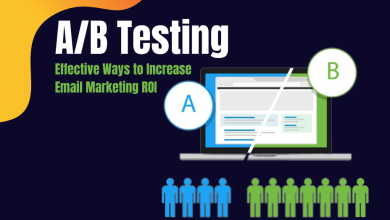The Effective Ways to Learn Web Designing for Beginners

Both art and science, website design relies on both the creative and logical side of a person’s mind. A good web designer recognizes the meaning of every element of a design. They make choices at a granular level, shaping each element, never losing sight of how the elements will fit together and function to achieve the larger design goals.
Web designing can be divided into several sub-disciplines. Some designers make careers specializing in areas such as user interface, UX, SEO, and other areas of expertise. At the start of your journey as a designer, you should know a bit more about all of these different facets of web design. Becoming a web designer doesn’t have to be difficult. If you want to know the basic fundamentals, read these guidelines you will know everything.
Also Read:
- Top Trendy Web Designing Software Tools In 2021
- Popular Tips for Web Designing in 2021
- Techniques To Improve Your Web Designing Skills in 2021
Get Full Knowledge of Visual Design
Line: Every letter, border, and division in a layout is composed of lines that make up its bigger structure. Understanding how lines are used to create order and balance in a layout is essential to learning web design.
Shapes: In visual design, the three essential shapes are squares, circles, and triangles. Blocks of material can be represented by squares and rectangles, buttons can be represented by circles, and significant messages or calls to action can be represented by triangles.
Texture: Texture is a representation of something’s appearance as it would appear in real life. We can tell by looking at something’s texture whether it’s rough or smooth. The use of textures is prevalent across web designing.
Colors: You’ll be a better web designer if you know about the color wheel, complementary hues, contrasting hues, and the emotions that go along with each one.
Grids: Grids have their roots in the earliest days of graphic design. They function so well in bringing order to images, texts, and other elements in web designing.
Basic understanding of HTML.
In web designing, a website’s information, graphics, navigation, and other features are shown in a web browser thanks to Hypertext Markup Language (HTML).
HTML tags are the instructions a browser uses to generate a website. Headings, paragraphs, links, and images are all controlled by these tags. You’ll especially want to know how header tags like H1, H2, and H3 tags are used for content hierarchy.
Understand CSS
Cascading style sheets (CSS) give styling and extra instructions on how an HTML element will appear. Fonts, padding, alignment, color selection, and even grid creation are all made possible with CSS.
Knowing how CSS works will offer you the ability to design your own websites and change pre-existing ones.
Read:
- Important Things You Need to Start an Effective website
- Top-5 Web Site Design Tips for a Professional Site
Basics of User Experience Design
When it comes to websites, user experience (UX) is the trick that makes websites brought to life, transforming them from a static arrangement of elements into something that engages with the emotions of those who are scrolling through them. Color scheme, content, typography, layout, and graphics all work together to help your message reach your target audience. With regards to UX design, precision and generating feelings are key components.
Understanding the Fundamentals of Designing Layouts
Design patterns that our eyes immediately recognize help us navigate a website more efficiently. We instinctively know where to look since we’ve seen the same patterns in the media we’ve consumed all our lives. It’s important to understand design patterns if you want to build websites that have a natural flow between the text and images.
Learn Topography
Fonts have the capacity to convey a variety of meanings and emotions while also affecting the ease with which they are read. Knowing how to use typography is critical if you want to pursue a career in web design.
Typography in web design serves a variety of objectives. To begin with, it serves the practical function of improving the legibility of the information. The usage of styled typeface, however, can enhance the overall appearance.
Read:
Now Create Something
To become an expert in web designing, you can watch tutorials, read blog posts, register in online classes, and learn all you can about web design. But the only way to become a web designer is to begin web designing.
Begin by working on a small, manageable project. Maybe you know someone who needs help building a portfolio or who is running a side business without an online presence. Offer to design something for them free of charge.
You can also practice your web design skills by creating a website for a fake company. You can also include it in your resume.
Find a mentor.
Mentors are invaluable because they’ve been where you are, at the very beginning, and want to help you by sharing the technical skills they’ve learned. In terms of expertise and information, they’re incredibly well-rounded. When it comes to collecting feedback on your work and discovering what you’re doing well and where you can improve, they’re an excellent resource. When looking for a mentor, look for someone whose work you respect and who is an expert in the area in which you are interested.
Not long ago, hand-coding a website’s HTML and CSS required extensive knowledge of the programming language. Using no-code solutions like Webflow, anyone can quickly and easily make a website and launch it.




